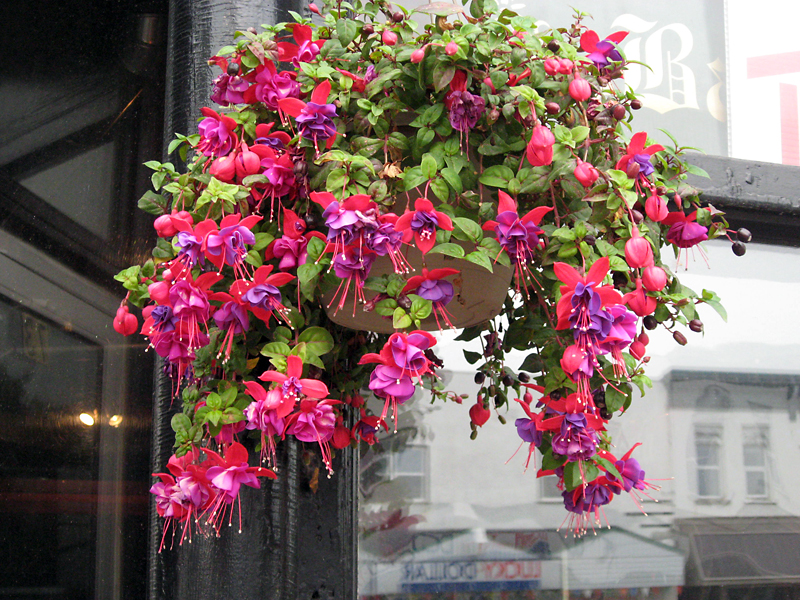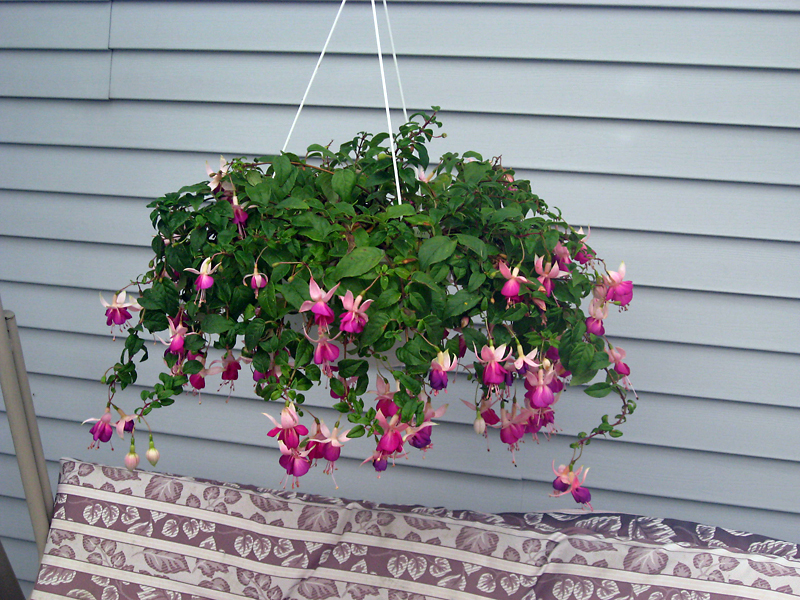Gone Gardenin’ – Pros and cons of hanging baskets but fuchsia a winner
Advertisement
Read this article for free:
or
Already have an account? Log in here »
We need your support!
Local journalism needs your support!
As we navigate through unprecedented times, our journalists are working harder than ever to bring you the latest local updates to keep you safe and informed.
Now, more than ever, we need your support.
Starting at $15.99 plus taxes every four weeks you can access your Brandon Sun online and full access to all content as it appears on our website.
Subscribe Nowor call circulation directly at (204) 727-0527.
Your pledge helps to ensure we provide the news that matters most to your community!
To continue reading, please subscribe:
Add Brandon Sun access to your Free Press subscription for only an additional
$1 for the first 4 weeks*
*Your next subscription payment will increase by $1.00 and you will be charged $20.00 plus GST for four weeks. After four weeks, your payment will increase to $24.00 plus GST every four weeks.
Read unlimited articles for free today:
or
Already have an account? Log in here »
Hey there, time traveller!
This article was published 15/05/2014 (4194 days ago), so information in it may no longer be current.
There is nothing like a hanging basket to add beauty and charm to an outdoor living space. Whether used on a deck, a patio, or in a secluded garden room, a hanging basket adds that certain something to any space.
Hanging baskets have certain advantages over planting things right in the soil.
Firstly, the plants can be protected from most critters, such as deer, if the baskets are hung high enough.

The chore of weeding is greatly reduced when hanging baskets are used because usually a soilless mix is used in baskets and these mixes should not contain any weed seeds.
Hanging baskets are also good alternatives when space is limited on the ground or on the deck/patio.
Your deck or patio may not be large enough to accommodate planters and pots, so using hanging baskets will prevent you from tripping over such containers or having to move them out of the way to make more space when guests arrive.
As well, hanging baskets, like other containers, have the distinct advantage of being mobile — they can be moved if you so desire.
There are, however, some drawbacks to using hanging baskets, although these disadvantage usually can be overcome.
Hanging baskets dry out more quickly than large containers located at ground level or plants growing directly in the ground.
Using drip irrigation systems will alleviate these watering woes. Reaching up to water hanging baskets can be challenging for some people but there are devices available that can be used to raise and lower hanging plants with ease.
Hanging baskets can be employed in various ways. Shepherd hooks are a good way to incorporate hanging baskets into the landscape — they do not have to be restricted to hanging from hooks in the roof soffits.

Hanging baskets also can be hung on fences or walls to dress up bare expanses of wood or stucco; half baskets are available to facilitate hanging plants on such flat surfaces. Hanging baskets also look good when placed on pedestals or in wrought iron or wicker plant stands.
There are many choices available when it comes to deciding what plants to use in a hanging basket, but few hanging plants put on the show that fuchsias do. These glorious hanging plants, with their delicate looking, two-tone flowers, create stunning focal points wherever they are used.
Fuchsias come in a wide range of colours ranging from white to pink to violet, purple and red. Each flower consists of the corolla, which is the centre part of the bloom, and the row of petals around the flower’s base called the sepals.
Usually the corolla and the sepals are of contrasting colours, although there are some fuchsia varieties that have flowers of a single colour, such as white or light blush pink.
Fuchsia blooms are produced on new growth so it is important to pinch the plants early in the growing season to encourage the development of lots of new stems — this will have been done by the greenhouse operators if you purchase a fuchsia at this time of year.
Fuchsias are heavy feeders and should be fertilized with a half-strength solution almost every time they are watered. They also do not like their roots to dry out, so the planting medium must be kept moist at all times or the plants will stop blooming.
Although fond of water, fuchsias do not like wet feet, so the basket must have good drainage and the planting medium must allow excess water to drain away from the plant roots. Water the basket when the top few centimetres of soil feel dry to the touch.

Fuchsias will take some sun, but prefer light shade. The more light a fuchsia gets, the shorter the internode distance — the distance between leaf axils. Thus, a fuchsia grown in a lot of sun will be quite bushy and erect, while the stems of a fuchsia grown in total shade will be more elongated and cascading.
The stems of fuchsias are quite brittle so they will not withstand much wind without sustaining damage. On windy days, it is often a good idea to lift the basket off its hook and place it in a sheltered spot until the wind subsides.
A fuchsia can be wintered indoors — these plants will not withstand frost — but the task can be a challenging one. Spider mites and aphids like fuchsias and will proliferate in a dry indoor environment.
In the fall, before frost, bring the fuchsia indoors (after taking precautions to remove insect pests) and allow the plant to naturally become dormant. It will gradually lose leaves and stop putting forth new growth.
Keep the soil on the dry side, although do not let the roots dry out. By November, the plant will probably look quite bedraggled and you can put it into winter storage — a cool, dark spot.
Before placing the plant in its winter storage spot, cut it back severely and water it a couple of times during the winter to ensure that the roots stay alive.
New growth will appear by March — the dormant period should be about three months — and the pot can be brought out of storage and encouraged into growth in front of a sunny window.
With any luck, you will be able to enjoy another glorious display of bloom from your fuchsia.

OUT & ABOUT
For the past month, I have been frantically planting, slipping, dividing and potting up plants for Minnedosa Horticultural Society`s annual plant sale which is this evening (Thursday, May 15) from 5:30 until 7 p.m. at the Minnedosa Community Conference Centre. Perhaps I will see you there.
Albert Parsons is a consultant for garden design and landscaping who lives in Minnedosa.
» communitynews@brandonsun.com
